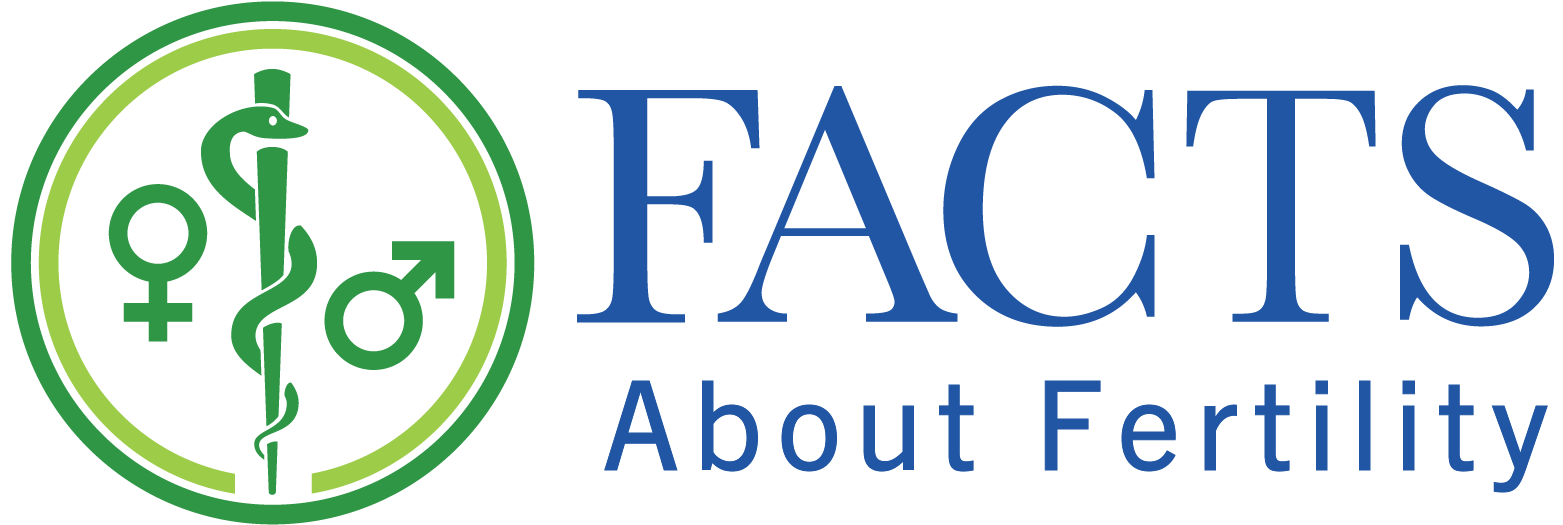By: Lindsay Gugerty, DO
Editor’s Note: As we near the end of PCOS Awareness Month, we now consider treatment options available to women diagnosed with PCOS and infertility, comparing the former gold standard clomiphene with letrozole. As part of our series, we are highlighting a research summary by Lindsay Gugerty, former FACTS elective student, investigating the effect of letrozole on anovulatory women diagnosed with PCOS. The 2019 study by Alizzi et al. analyzes letrozole response predictors and treatment outcomes, including among women who have failed clomiphene treatment.
Introduction
Polycystic ovarian syndrome (PCOS) is a common condition that affects 5 to 10% of women [1] and is a source of much anxiety surrounding fertility and conception. Medications have been tried to induce ovulation in these women for many years. Letrozole is an aromatase inhibitor that blocks the production of estrogen. Through a negative feedback pathway, the lack of estradiol signals the hypothalamus and pituitary to increase production of key hormones – gonadotropin releasing hormone (GnRH), follicle stimulating hormone (FSH), and luteinizing hormone (LH). The accumulation of androgens in the ovary also promotes expression of the FSH receptor, insulin-like growth factor (IGF), and its receptor, thereby increasing follicular growth. [2]
Letrozole was investigated for its potential to induce ovulation in women with PCOS and compared against the gold standard at the time, clomiphene citrate, in a New England Journal of Medicine study published in 2014. [3] Study outcomes found letrozole led to a higher rate of ovulation and pregnancy in infertile women with PCOS compared to clomiphene. The present study by Azziz et al. [1] exclusively investigated the influence of letrozole in rates of ovulation and pregnancy in anovulatory, infertile women diagnosed with PCOS. These rates were then compared to women who had previously tried and failed clomiphene citrate. The study also sought to identify the best clinical and laboratory predictors of response to letrozole in this patient population.

Methods
Researchers conducted a prospective cohort study of 67 anovulatory, infertile women aged 18 to 35 with PCOS from an infertility unit in Al-Yarmouk Hospital. Of the study’s participants, 64.2% had previously tried and failed clomiphene. Before enrollment, all potential participants completed a thorough clinical, laboratory, and ultrasound screening process. First, the diagnosis of PCOS had to be based on two of the three traditional criteria: abnormal ovulatory function, evidence of hyperandrogenism, and polycystic ovaries evident on ultrasound. A comprehensive history intake and physical examination were performed and other causes of infertility were ruled out. Second, laboratory serum levels were recorded to assess endocrine, thyroid, and gonad function. Lastly, clinicians performed a transvaginal ultrasound to assess ovarian volume and follicular size. A scoring system was created with these various factors to create a score range from 0-50; a score >26 indicated achieving pregnancy was likely.
After a thorough evaluation, 67 women were ultimately included in the study and given 5 mg of letrozole on day 2 or 3 of their cycle for five consecutive days. Beginning on day nine, follicular growth was measured every other day to assess for signs of ovulation. Participants were given human chorionic gonadotropin (hCG) subcutaneously, and their serum progesterone levels were measured one week later. If ovulation occurred, as indicated by transvaginal ultrasound and corresponding serum progesterone levels, this process was repeated for three consecutive cycles unless pregnancy was achieved.
Results
The primary outcomes of the study were the rates of ovulation and pregnancy. Overall, 64.2% of participants achieved ovulation and 32.8% achieved pregnancy. Women who had never used clomiphene had higher chances of achieving both ovulation and pregnancy than women previously prescribed clomiphene (87.5% vs. 51.2% and 41.6% vs. 27.9%, respectively). Women reporting prior pregnancies were also more likely to be successful in achieving both ovulation and pregnancy compared to women with no past pregnancies (3.75-fold increase and 8-fold increase, respectively — both statistically significant increases).
Regarding a response to letrozole, several variables corresponded with failure to achieve ovulation and pregnancy; historical variables included the longer the duration of infertility, days between cycles, and the lower the chances of ovulation and pregnancy. Physical markers included a high BMI, large waist circumference, and signs of hyperandrogenism. Laboratory values included high LH, testosterone, anti-mullerian hormone (AMH), and free androgen index, along with high fasting glucose. On the contrary, high levels of estradiol and sex hormone binding globulin (SHBG) were associated with a higher likelihood of ovulation and pregnancy. Ultrasound findings of smaller mean antral follicle diameter (2-5 mm) and increased mean ovarian volume were predictors of lower chances of ovulation and pregnancy.
Internal validation of variables using ROC-AUC classified various markers as “excellent,” “good,” and “fair” predictors of ovulation and pregnancy. “Excellent”-rated predictors of ovulation included days between cycles, mean ovarian volume, modified Ferriman-Gallwey score (m-FG), LH, testosterone, AMH, and mean antral follicle count (AFC), while endometrial thickness and estradiol levels were rated “excellent” predictors of both ovulation and pregnancy.
Discussion
This study identified several markers that were associated with decreased rates of ovulation and pregnancy and corroborated the findings of several other studies. Associations in baseline BMI, proinsulin levels, signs of hirsutism, and duration of infertility have been confirmed again to be associated with persistent anovulatory cycles and infertility. Awareness of these common findings can help physicians identify those women with PCOS who may be at the greatest risk for infertility. The scoring system developed by Alizzi et al. based on a number of predictive clinical, laboratory, and ultrasound results, is valuable as an objective way to quantify this risk, but further research is needed, as well as a larger sample size for improved validation.
“Baseline BMI, proinsulin levels, signs of hirsutism, and duration of infertility have been confirmed again to be associated with persistent anovulatory cycles and infertility.”
This study also suggests that letrozole should be first-line therapy to treat women with PCOS, as indicated by the higher rates of both ovulation and pregnancy in women without a history of prior clomiphene use. This highlights the necessity for continuous evolution and adaptation to best medical practices; just because something once merited the gold standard does not mean it should always be continued. While perfecting an objective scoring system may be useful, it is still important to identify basic common themes that put women at risk for anovulatory cycles and infertility. The sooner these signs are identified, the earlier treatment can start to avoid problems down the road. Identifying these signs should be the responsibility of every woman’s physician; many of the best clinical predictors can be identified with a comprehensive history and physical alone, without the need for extensive lab work or imaging. Women can also help proactively to identify potential problems by charting their cycle, ideally with a fertility awareness-based method (FABM) noting cycle length and any abnormalities in patterns of cervical discharge, bleeding, and other physical signs and symptoms associated with their menstrual cycle.
“Letrozole should be first-line therapy to treat women with PCOS, as indicated by the higher rates of both ovulation and pregnancy in women without a history of prior clomiphene use.”
Takeaways for Physicians and Patients
This article suggests that it may be fairly straightforward to identify women with PCOS at the highest risk for anovulation and infertility, perhaps without the need for an elaborate laboratory workup. Learning that the duration of infertility was a consistent predictor of anovulation and low pregnancy rates inspires me, as it should inspire other physicians, to be thorough in our history and physical examination.
Similarly, this should motivate women with PCOS to pay attention to their bodies, track their cycles with a FABM, and seek help when things are not right. This is one of the reasons I love charting with a FABM and strongly feel that all women, especially those with PCOS, should be diligent in charting their cycles and advocating for themselves. By recording her signs and symptoms on paper or inputting them into a highly rated app, it becomes much easier for her and her FABM-trained clinician to recognize when something is amiss, and intervene sooner rather than later.
“It may be fairly straightforward to identify women with PCOS at the highest risk for anovulation and infertility, perhaps without the need for an elaborate laboratory workup … This should motivate women with PCOS to pay attention to their bodies, track their cycles with a FABM, and seek help when things are not right.”
References
[1] Alizzi FJ, Showman, HAK, Fawzi HA. Predictors for response to letrozole as an ovulation induction in anovulatory infertile polycystic ovarian syndrome women. Iraqi Journal of Embryos and Infertility Researches. 2019;9(1):89-110.
[2] Legro RS, Brzyski RG, Diamond MP, et al. Letrozole versus clomiphene for infertility in the polycystic ovary syndrome [published correction appears in N Engl J Med. 2014 Oct 9;317(15):1465]. N Engl J Med. 2014;371(2):119-129. doi:10.1056/NEJMoa1313517
[3] Yang AM, Cui N, Sun YF, Hao GM. Letrozole for Female Infertility. Front Endocrinol (Lausanne). 2021;12:676133. doi:10.3389/fendo.2021.676133
ABOUT THE AUTHOR

Lindsay Gugerty
Lindsay Gugerty is a graduate of the Philadelphia College of Osteopathic Medicine. She is pursuing residency in Obstetrics and Gynecology at Christiana Care in Deleware. She is passionate about women’s health, and a proponent that women be active and vocal in matters of their own health and wellbeing.
Inspired by what you read?
You can support the ongoing work of FACTS here. To connect with a member of our team, please email development@FACTSaboutFertility.org. Interested in becoming an individual or organizational member? You can learn more and register here. To discuss with a member of our team, please email membership@FACTSaboutFertility.org.





